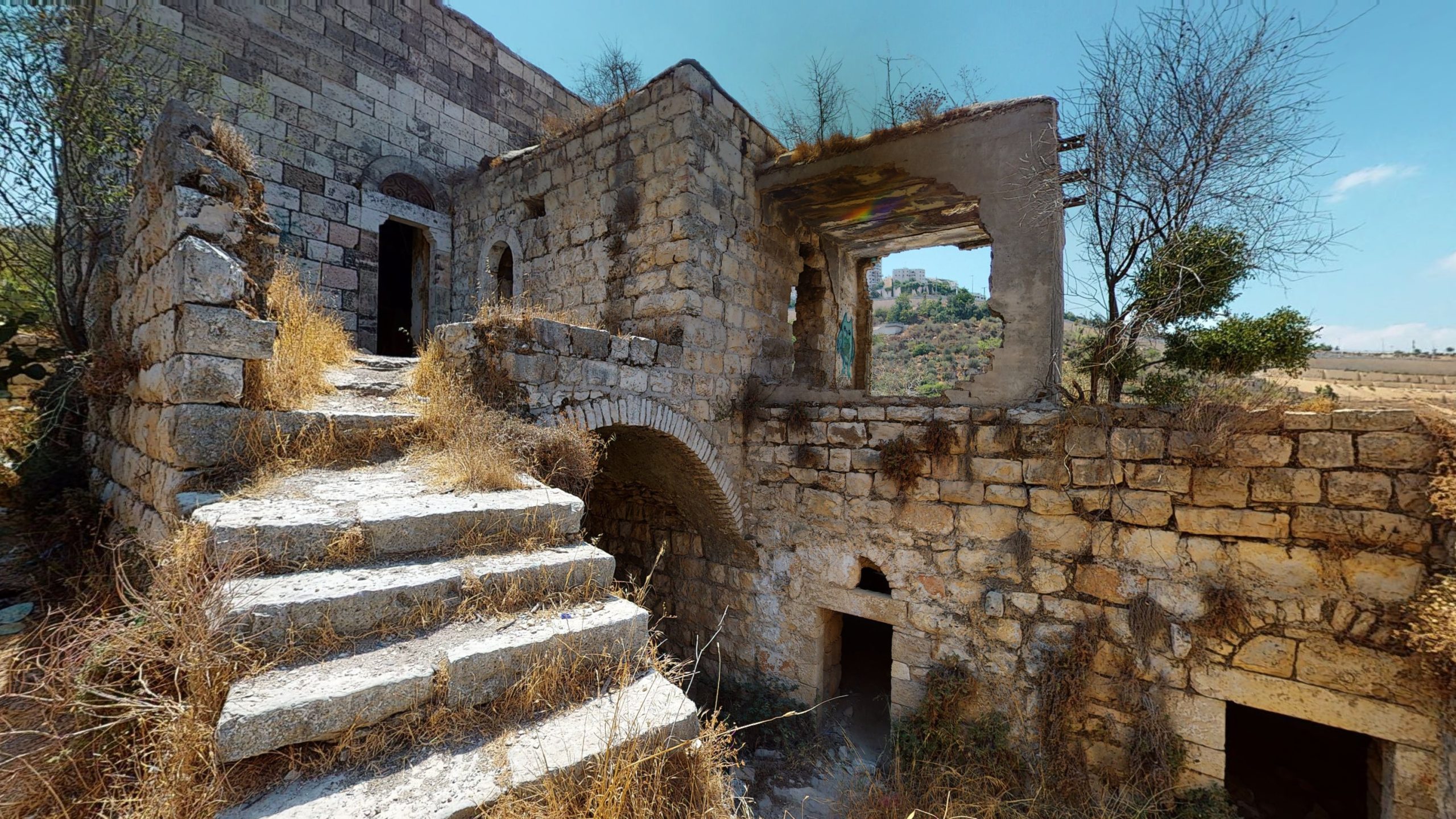OpenVL is a nonprofit organization committed to 3D documenting and preserving architectural heritage for future generations
In 2020, OpenVL was established as a pioneer under the Triangle and Research Development Center (TRDC) as a dedicated unit focused on all aspects of heritage preservation.
Our main goal is to create a digital archive of Palestine’s last-stand heritage sites.
We aim to conserve its multi-layered heritage for future generations and provide a platform for academic research and public exploration. This initiative not only safeguards Palestine’s cultural identity but also contributes to global efforts in heritage preservation.

Our team successfully created a prototype virtual tour inside one of Lifta’s houses. This immersive experience allows visitors to gain a more accurate and detailed understanding of the house’s interior and exterior, as well as a more comprehensive look at its status and the damage that occurred to it.
The impetus behind our work is rooted in the understanding that documenting Arab heritage sites within the Green Line represents the sole solution to guarantee their continued existence. Our work is a contemporary preservation alternative where conventional (physical) conservation and preservation methods are inaccessible. In such circumstances, documentation is the primary mechanism for safeguarding these monuments.

Raising Awareness
Lifta, located on the outskirts of Jerusalem, is facing an immediate threat of demolition due to the 6036 plan, which proposes the construction of luxury housing and commercial developments in the area. This plan poses a severe risk to Lifta’s architectural heritage, which is not just a local treasure, but a global one, embodying Palestine’s rich cultural and historical legacy. Lifta is a quintessential example of Palestine’s rural landscape during the 19th and early 20th centuries, characterized by its traditional stone houses, terraced fields, and natural springs. Its significance lies in representing Palestinian identity and history, serving as a poignant reminder of the Palestinian people’s deep-rooted connection to the land.
In response to the urgent need to preserve Lifta’s heritage, our team has dedicated the past year to employing advanced 3D technology to create an interactive digital archive. Through this initiative, we aim to document Lifta’s architectural marvels in intricate detail, Our project will be accessible online through a dedicated website, providing scholars and enthusiasts alike with the opportunity to engage directly with Palestinian architectural heritage.
Furthermore, the documented sites will be meticulously analyzed through an unprecedented academic research initiative. This research aims to facilitate a comprehensive understanding of the site, contextualize its significance, and illuminate the intricate processes of urban development in Palestine and the Levant.


The project endeavors to confront the urgent challenge of conserving Lifta’s imperiled architectural heritage, which faces the imminent risk of vanishing due to neglect, natural degradation, and proposed redevelopment initiatives. The village, revered for its status as the quintessential embodiment of Palestine’s evolving rural landscape during the 19th and early 20th centuries, has garnered the interest of the international heritage preservation community and was listed among the 25 endangered sites on the 2018 World Monuments Watch.

Nevertheless, despite ongoing efforts, the future of the site remains increasingly uncertain. The impetus behind our proposal is rooted in the understanding that the documentation of Arab heritage sites within the Green Line represents the sole solution to guarantee their continued existence. Essentially, our work serves as a contemporary preservation alternative in situations where conventional (physical) conservation and preservation methods are inaccessible. In such circumstances, documentation emerges as the primary mechanism for safeguarding these monuments.